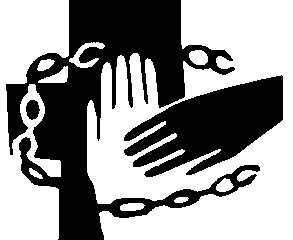One of the U.S. Supreme Court’s most important civil liberties decisions arose out of a case that began in a one-room Lutheran schoolhouse in rural Nebraska. On a May afternoon in 1920, Robert T. Meyer, a teacher at Zion Lutheran Church’s elementary school near Hampton, Nebraska, boldly continued teaching German in defiance of state law when the Hamilton County attorney entered his classroom. Meyer, a forty-two-year-old father of six, knew that this elected official did not want to offend the area’s large German-American community. “I had my choice,” Meyer later told his lawyer. “If I changed into English, he would say nothing. If I went on in German, he would arrest me…”
After Schism
Why do I stay? I am asked that question regularly, including by readers of the first draft of this essay. I struggle to answer. My conscience troubles me. I worry that I stay because my spouse and I have been treated well in an “intact” synod, if I may borrow admittedly strong language from the Church Struggle in Germany in the 1930s for those regional Lutheran churches not taken over by the pro-Nazi German Christian party…
Whose Flannery?
Like so many others, I was first exposed to Flannery O’Connor in high school when assigned her infamous short story “A Good Man Is Hard to Find” in English class. My English teacher told the class with obvious delight that the point of the story is that all religious people are hypocrites who will do whatever they can to save their own skin because God sure won’t. I didn’t think much of that and decided to avoid Flannery O’Connor in the future…
Thou Shalt Not Cheat Prospective Lutherans
It was out of simple curiosity that I attended the classes. They were three one-hour sessions offered to non-Lutheran adults desiring church membership at the congregation that was my home church during my senior year of seminary. The classes weren’t taught by either of the pastors but by a young parish worker. The first week’s topic was baptism, the second week’s was communion, and the final week was stewardship. By the end of the second week, I had concluded that the teacher may not have been listening very carefully during her confirmation class days when the sacraments were being taught…
Simul Lutheran Et Charismatic In Ethiopia
The Ethiopian Evangelical Church Mekane Yesus (EECMY) has never thought of the charismatic movement as being incompatible with its Lutheran identity. Instead, it acknowledges that it owes its missional achievements to the charismatic movement that arose and spread throughout its congregations in the late 1960s and early 1970s. The EECMY’s rapid numerical growth—from about two hundred thousand in the mid-1970s to over eight million today—resulted from the Spirit’s bringing people to faith and helping them grow through the church’s mission of proclaiming the word of God to all nations…
St. Gudina Tumsa
The son of Obbo Tumsa Silga, Gudina Tumsa was born in 1929 at Boji in Karkaro, in the present administrative region of Mirab Welega in Ethiopia. Although Christianity was introduced to the community three decades before Gudina Tumsa’s birth, his nuclear as well as his extended family did not accept Christ as their personal savior until Gudina went to school in 1938. There he was converted to Christianity and started to preach the good news to his family as well as the surrounding community. Gudina’s first reaction to the traditional religion—the tradition that his parents had observed for many years—was to cut down the ritual Hommi Tree, a tree considered sacred by his parents and others who worshiped it…
Things We Never Preach About: Sexual Abuse
Most congregations realize that occasionally they have to set their jaws, tighten their haunches, and listen to a sermon on divorce. It shows up in the three-year lectionary at least once, and while leery pastors might try to sneak around it, both they and their flocks will know, leaving a silence far more awkward than God’s gracious will for marriage and those who fail at it. Better to address the subject than to suggest that we are embarrassed by the good things that our Lord has said…
Review of "Martin Luther's Legacy" by Mark Ellingsen
The subject matter of this book is very dear to my heart. I have spent my academic and pastoral vocations in finding ways to make Luther relevant for our times. Mark Ellingsen’s focus in this book follows in the same path. I am grateful to Ellingsen’s scholarly and pastoral wisdom in reading Luther from a “pastoral-contextual paradigm.” Ellingsen establishes why he prefers to read Luther from a “pastoral-contextual model” rather than reading Luther as a systematic theologian. As the author notes and I agree, to read Luther as a systematic theologian does not do justice to the richness of his thought and the paradoxical character of his theology…
The Eric W. Gritsch Memorial Fund Fellowship for Reformation Studies
Our friends at the Eric W. Gritsch Memorial Fund are offering an excellent fellowship opportunity for a student in the field of Reformation History. The Gritsch Memorial Fund (est. 2013), founded in honor of Reformation Scholar and Lutheran pastor Eric W. Gritsch (1931–2012), is pleased to offer a substantial fellowship award for a scholar pursuing studies in Reformation history and/or theology…
Preaching Law And Gospel In The Old Testament
The law-gospel paradigm is central to Lutheran hermeneutical, catechetical, and homiletical theory and praxis. The Formula of Concord, Solid Declaration devotes all of Article V to this paradigm. It explains that “the law... is a 'ministry that kills by the letter’ and that ‘proclaims condemnation’; the gospel, on the other hand, is ‘the power ofGod for salvation to everyone who has faith." It emphasizes that preaching the law is insufficient for “genuine and salutary repentance,” that the “gospel must be added to it,” and that “both teachings must be alongside each other and must be taught together, but in a proper order and with appropriate distinction”…
The First Martyrs of the Reformation
The story of the first evangelical martyrs is closely related to the story of the Observant Augustinian Monastery at Antwerp. The brief existence of the Antwerp monastery roughly overlaps the first decade of Luther’s tenure at Wittenberg. Established in 1512, the Antwerp monastery was dissolved ten years later, thanks in part to the fact that the brethren there would not stop preaching Luther’s ideas. In 1522, the monastery was vacated and closed for good. In 1528, the monastery’s chapel was reestablished as a Roman Catholic parish church…
The St. Thomas Mass
For years now, the Mikael Agricola Church in Helsinki has been packed every Sunday evening at six o’clock. It is the hour for the St. Thomas Mass, celebrated under the name of the apostle who seemed to have more questions than answers in his faith. This Lutheran worship service has been influenced by old liturgical traditions of the church as well as by the spirit of ecumenism. The service takes two hours and it requires a team of seventy to a hundred people, all volunteers. Usually the teams differ from Sunday to Sunday, because each Sunday is a project of its own…
Review of "Changing World, Changing Christ" by Richard O. Johnson
Most readers of this website’s book reviews probably lean toward a sympathetic view of the American Lutheran Publicity Bureau and its associated journal, Lutheran Forum. I therefore want this review to respect both this readership and the ALPB but also include a historian’s critical eye. I considered this balance when I first picked up Richard O. Johnson’s Changing World, Changeless Christ: The American Lutheran Publicity Bureau, 1914–2014. Thankfully, this volume provides a solid history of the ALPB, which made my balancing act much easier…
The Epistle of Jude, a Christian Midrash
The Letter of Jude has been called “the most neglected book of the New Testament.” Some classical theologians, among them Martin Luther, have held that Jude is not only dependent on but even contained in II Peter. Exegetes still wrestle today with the proper classification of Jude. Is it a “catholic letter,” meaning that it belongs together with I and II Peter and, maybe, the Pastoral Epistles? Or does it rather indicate a proximity to Jewish Christianity, belonging therefore with Matthew and Mark? Is it a “genuine letter,” composed for the purpose of solving a real controversy, or a treatise against heresy in general?…
Adiaphora, Mandata, Damnabilia
Adiaphora is a classy word and antedates the English language by a long time. Twenty-five hundred years ago the philosophical sect of the Sophists talked about adiaphora, and the Cynics did it before them. Diapherein in Greek means to separate, to make a difference. Add the letter alpha (an alpha privative) and it becomes adiapherein. Thus, adiaphora means things that do not make a difference. Or it can mean things that are neither good nor evil. That makes the term a bit too static for good theological use…
I Don’t Want My Church to Grow
The title is an exaggeration. Or, more accurately, a lie. As a Lutheran pastor, I do want my church to grow. If you stripped away all the artifice and false humility and my saying what I think I should say and even trying to think what I should think: yes, I want my church to grow more than anything else.
A Reader's Guide to Bonhoeffer Biographies
When I teach Bonhoeffer seminars at my seminary, I enjoy shocking the students early on by expressing what can only come across as a contrarian’s opinion: “You know, Bonhoeffer’s participation in the plot to kill Hitler was probably the least interesting thing about his life.” The students are generally aghast at this. Surely the romantic image of Bonhoeffer as the courageous Christian resister and martyr is too precious a treasure to diminish in this way? Well, I go on to explain, I say this because, as deeply inspiring as his courage and resistance are, for the contemporary church his theology is an even more exciting contribution…
St. Rosa Young
Rosa Jinsey Young is known as the mother of black Lutheranism in central Alabama, as she singlehandedly brought the Lutheran church to rural Alabama from 1916 onward, establishing churches and schools for underserved black children and families. Her ministry led to the founding of what is now known as Concordia College Alabama in Selma, the only historically black Lutheran college in the nation…


















